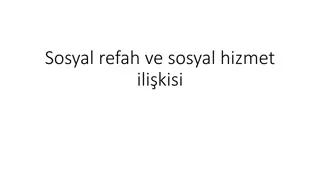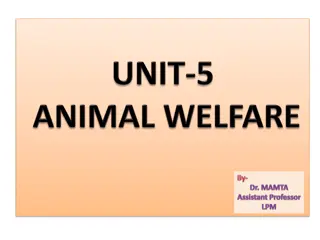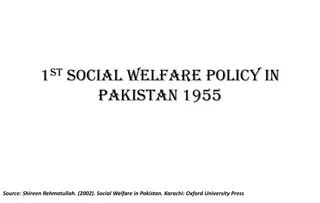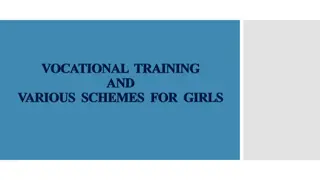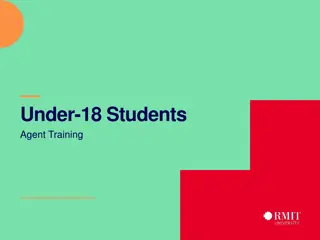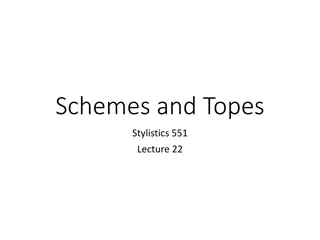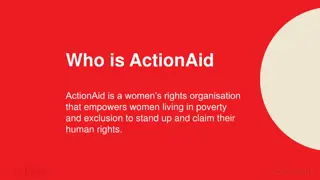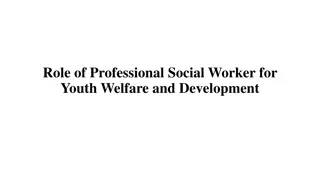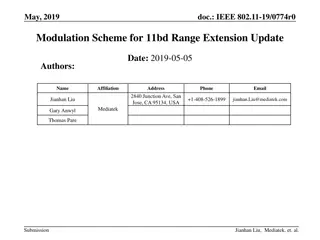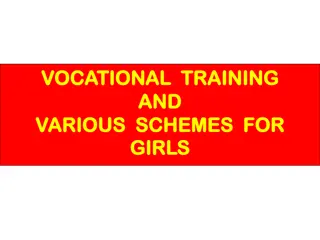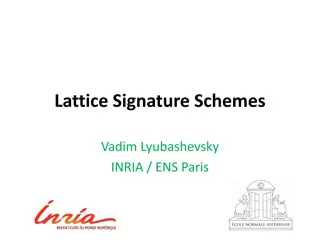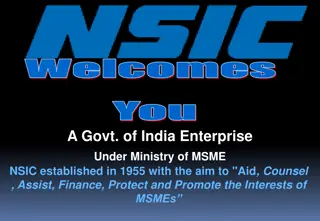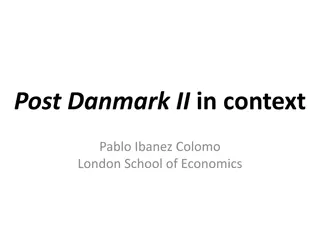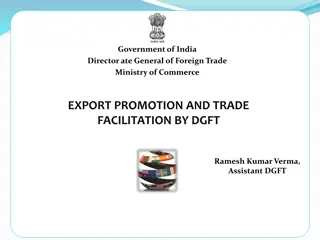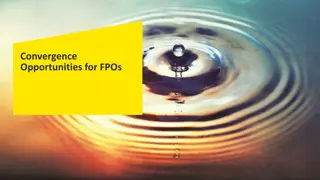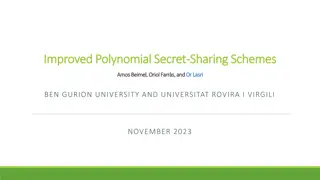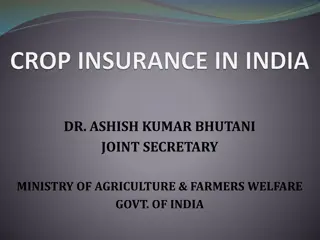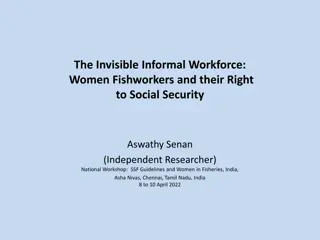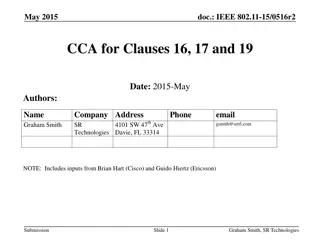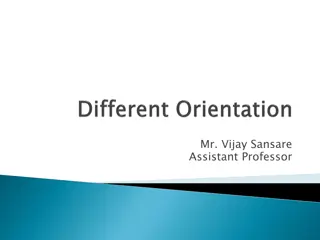Welfare Schemes for Women in India: Empowering Women Through Government Initiatives
Women in India face challenges in literacy, labor participation, and earnings, prompting the government to focus on their welfare and development since the First Plan. Initiatives have evolved to empower women economically and socially, emphasizing equality and participation in national development. Constitutional provisions support positive discrimination for women, with schemes like MCTS enhancing mother and child health tracking.
Download Presentation

Please find below an Image/Link to download the presentation.
The content on the website is provided AS IS for your information and personal use only. It may not be sold, licensed, or shared on other websites without obtaining consent from the author. Download presentation by click this link. If you encounter any issues during the download, it is possible that the publisher has removed the file from their server.
E N D
Presentation Transcript
WELFARE SCHEMES FOR WOMEN IN INDIA Dr.G.Chitra Parvathy, Dept. of History, T.D.M.N.S. College, T.Kallikulam. Presented by:
BACKGROUND Women constitute 48 per cent of the total population of the country. They suffer many disadvantages as compared to men in literary rates, labour participation rates and earnings. The development of women has been receiving attention of the Government of India from the First Plan, treated as a subject of welfare and clubbed together with the welfare of the disadvantaged groups like destitute, disabled, aged, etc. In 1953, the Central Social Welfare Board was set up which acts as an Apex Body at the Centre to promote voluntary action at various levels, especially at the
Second to Fifth Plans continued this strategy, besides giving priority to women s education, and launching measures to improve material and child health services, supplementary feeding for children and expectant and nursing mothers. Sixth Plan, approached from welfare to development of women with specialemphasis on the three core sectors of health, education and employment.
Seventh Plan stressed on raising their economic and social status and bringing them into the mainstream of national development. Eighth Plan stressed women to function as equal partners and participants in the development process.
Ninth Plan made two important changes in the strategy of development of women.: A) The first was the Empowerment of Women , where women could freely exercise their rights both within and outside home, and are equal partners along with men. B) The second was the convergence of existing services where special strategy of Women s Component Plan was adopted through which not less than 30 per cent of funds/benefits now flow to women from all the general development sectors.
Under Article 15(3), the Constitution of India allows for positive discrimination in favor of women. The article, under right to equality, states: "Nothing in this article shall prevent the State from making any special provision for women and children. "The State shall, in particular, direct its policy towards securing that the citizens, men and women equally, have the right to an adequate means of livelihood."[
MCTS ( Mother and Child Tracking System) Mother & Child Tracking System(MCTS) is a centralized web based application for improving delivery of health care services to pregnant women and children up to five years of age through name based tracking of each beneficiary and monitoring service delivery. In July 2011 MCTS has been declared as the Mission Mode Project under NeGP (Nationale- Governance Plan).
MCTS- Protocol Mission Director State Programme Officers State DM&E O District Dev Commissioner District DPM CMO BM&E O Data Entry Operator Block BMO M/O In- charge Primary Health Centre Sub Centre ANM ASHA Village
The Indira Gandhi Matritva Sahyog Yojana Conditional Maternity Benefit plan (CMB) The Indira Gandhi Matritva Sahyog Yojana (IGMSY) is a maternity benefit program run by the government of India. It was introduced in 2010 and is implemented by the Ministry of Women and Child Development(WCD). It is a conditional cash transfer scheme for pregnant and lactating women of 19 years of age or above for first two live births. It provides a partial wage compensation to women for wage-loss during childbirth and childcare and to provide conditions for safe delivery and good nutrition and feeding practices. In 2013, the scheme was brought under the National Food Security Act, 2013.
Rajiv Gandhi Scheme for Empowerment of Adolescent Girls (RGSEAG) Sabla The Rajiv Gandhi Scheme for Empowerment of Adolescent Girls (RGSEAG) Sabla is a centrally sponsored program of GOI initiated on April 1, 2011under Ministry of Women and Child Development.
Rashtriya Mahila Kosh Introduction : The National Credit Fund for Women known as Rashtriya Mahila Kosh (RMK) was set up in 1993, as a national-level organisation under the Ministry of Women and Child Development, GOI to meet the credit needs of poor and asset less women in the informal sector
Universalisation of Women Helpline The Scheme of Universalisation of Women Helpline is being implemented since 1st April, 2016, intended to provide 24 hours emergency and non- emergency response to women affected by violence through referral (linking with appropriate authority such as police, One-Stop Centre, hospital) and information about women related government schemes programmes across the country through a single uniform number (181).
Priyadarshini The Ministry Women and Child Development has promoted 4745 Self Help Groups (SHGs) under its project Priyadarshini . The pilot project namely Women Empowerment and Livelihood Programme in Mid- Gangetic Plains- Priyadarshini - is being administered by the Ministry in 13 blocks spread across 5 districts in Uttar Pradesh and 2 districts in Bihar. Of the 4745 SHGs formed under the project, 2396 SHGs have been promoted in Bihar and 2349 in UP. Also, 2534 SHGs have been savings linked- 1243 in Bihar and 1291 in Uttar Pradesh. Rs.15 Crore has been sanctioned for the year 2012-13, of which Rs 2.50 Crore has been expended up to October 31st, 2012.
BEETI BACHAO BETI PADHAO The Census (2011) data showed a significant declining trend in the Child Sex This programme was launched in 100 critical districts with the lowest child sex ratio on 22nd January, 2015 at Panipat by the Prime Minister.
Rajiv Gandhi Scheme for Empowerment of Adolescent Girls (SABLA) Introduction: This is a centrally sponsored program of Government of India initiated on April 1, 2011 under Ministry of Women and Child Development.
UJJAWALA A Comprehensive Scheme for Prevention of Trafficking and Rescue, Rehabilitation and Re- Integration of Victims of Trafficking for Commercial Sexual Exploitation . The new scheme has been conceived primarily for the purpose of preventing trafficking on the onehand and rescue and rehabilitation of victims on the other.
RAJIV GANDHI NATIONAL CRECHE SCHEME FOR THE CHILDREN OF WORKING MOTHERS (RGNCS) provides day care facilities to the children in the age group 0-6 years from families with monthly income of less than 12000/-.In addition to being a safe space for the children, the cr ches provide services such as supplementary nutrition, pre-school education and emergency health care, etc. CENTRAL SOCIAL WELFARE BOARD: The mainwomen welfare related schemes and programmes being implemented by CSWB are family counselling centres, awareness generation programme and condensed courses of education for women.
NATIONAL MISSION FOR EMPOWERMENT OF WOMEN (NMEW) is an initiative of the Government of India for empowering women holistically. It is a Centrally Sponsored Scheme sanctioned in April 2011 and acts as an umbrella Mission with a mandate to strengthen inter- sectoral convergence. WORKING WOMEN S HOSTEL (WWH) Scheme envisages provision of safe and affordable hostel accommodation to working women, single working women, women working at places away from their home-towns and for women being trained for employment.
SUPPORT TO TRAINING AND EMPLOYMENT PROGRAMME (STEP) for Women was launched as a Central Sector Scheme during 1986-87. It aims at making a significant impact on women by upgrading skills for self and wage employment. The target group includes the marginalized assetless rural women and urban poor. SWADHAR SCHEME: The Ministry of Women and Child Development had been administering Swadhar scheme since 2001 for Women in difficult circumstances. Under the Scheme, temporary accommodation, maintenance and rehabilitative services are provided to women and girls rendered homeless due to family discord, crime, violence, mental stress, social ostracism. Another scheme with similar objectives/target groups namely Short Stay Home (SSH) is being implemented by Central Social Welfare Board.








